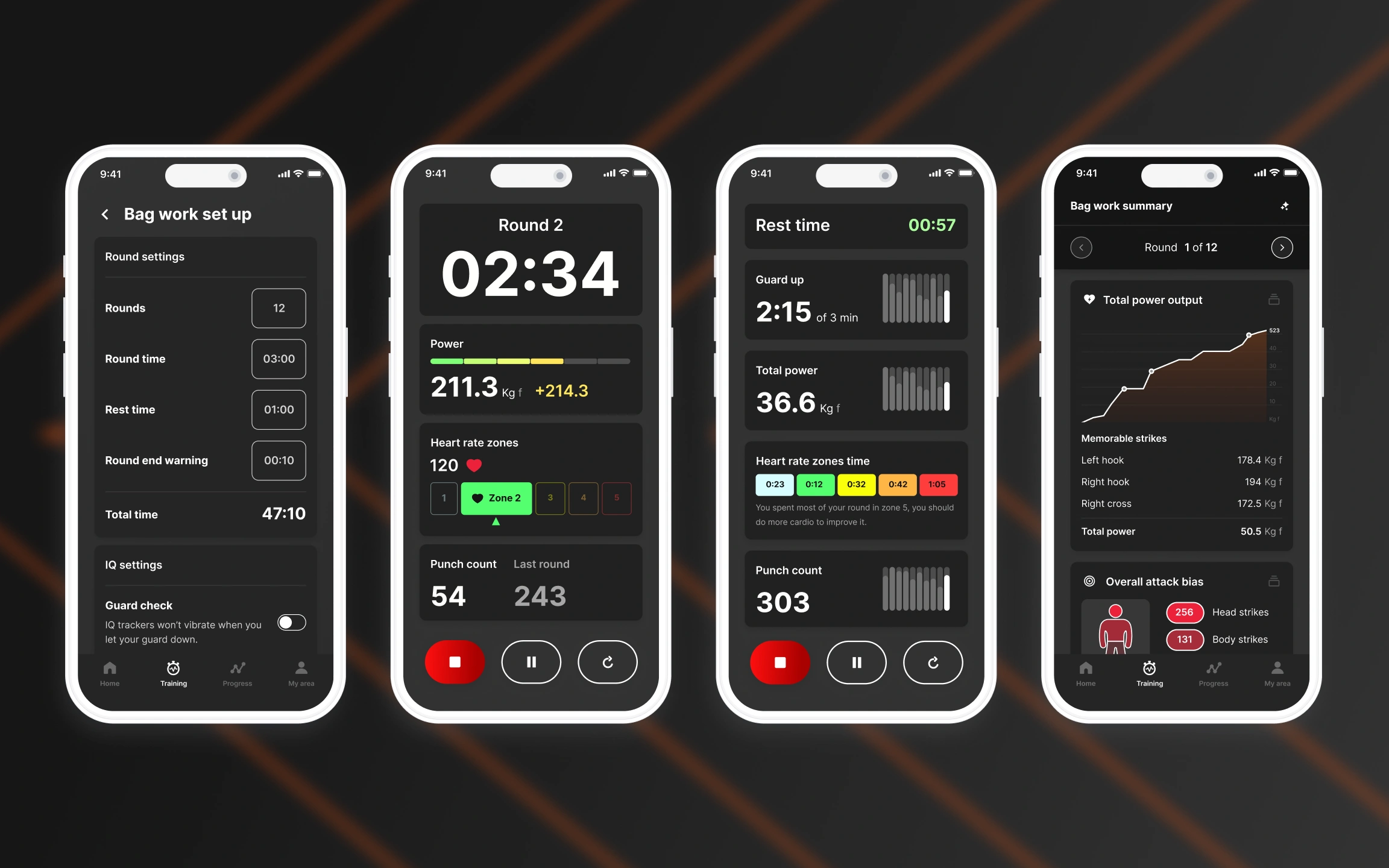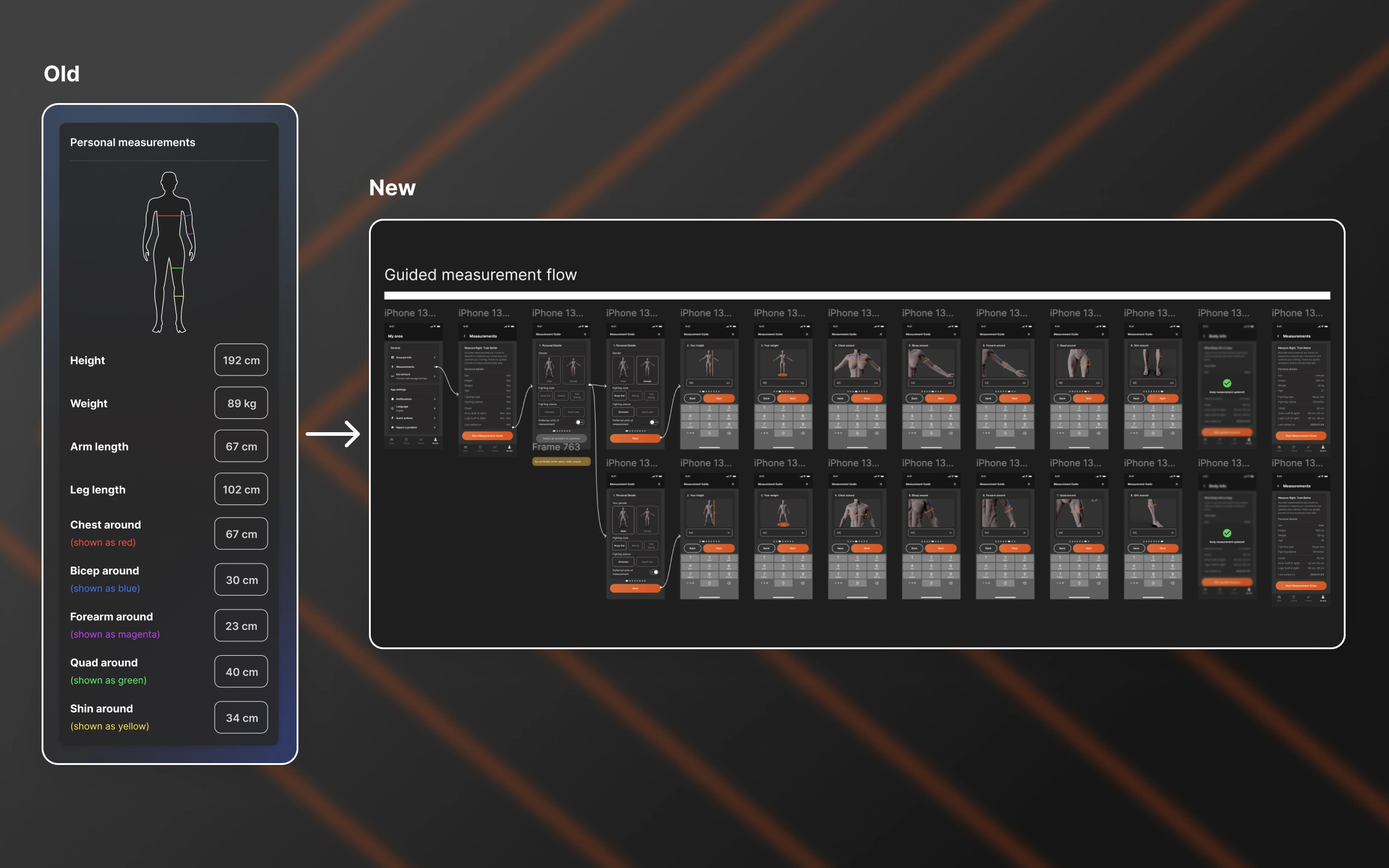The Challenge: Making Combat Training Smarter & Safer
Training for combat sports comes with inherent risks—poor technique and a lack of structured feedback often lead to injuries and inefficient training. Fighters need a way to measure performance in real-time, rather than relying solely on intuition.
Key Pain Points
- High injury rates: Studies show 228.7 injuries per 1,000 athlete exposures in MMA, with up to 80% occurring during training.
- Lack of structured feedback: Fighters and trainers rely on intuition rather than data to improve technique.
- Inefficient tracking: Strike force, fatigue levels, and reaction time are often unmeasured.
- No real-time performance monitoring: Fighters need a way to get immediate, actionable feedback during training sessions.

Design Challenges & Considerations
- Real-time feedback: Ensuring fighters receive actionable data instantly.
- Wearable sensor integration: The system needs to seamlessly track punch force, reaction time, and movement.
- Trainer and fighter usability: The app must be intuitive and easy to use, even during high-intensity sessions.
- Injury prevention analytics: Data must help fighters adjust technique to reduce injury risks.

We refined the home screen to prioritize structured training summaries, ensuring fighters could quickly assess their progress and adjust their routines accordingly.
Research & Key insights
To design an effective solution, I conducted:
✅ Interviews with fighters and trainers to uncover training challenges.
✅ Competitive analysis of existing wearable solutions.
✅ Live testing with motion sensors to capture accurate combat movement data.
Key Findings:
- Fighters preferred Kg Force over other units for measuring strike power.
- Instant feedback was essential for real-time corrections.
- Fatigue tracking helped trainers optimize training intensity and prevent injuries.
- Fighters needed quick access to training, so we introduced a quick-start button that allows them to begin workouts immediately while still tracking power, speed, endurance, total punches, and calories burned on the dashboard.
The Solution: Real-Time Combat Performance Monitoring
We designed an AI-powered app with a connected wearable sensor system, delivering real-time insights to fighters and trainers.
Key Features
🔹 Strike Force & Accuracy Tracking – Measures punch strength (Kg Force) and provides AI-driven accuracy adjustments.
🔹 Reaction Time & Fatigue Monitoring – Tracks movement efficiency and stamina, alerting trainers when fatigue rises.
🔹 Real-Time Analytics Dashboard – Live visualization of key performance metrics with comparative insights.
🔹 Trainer Insights & Recommendations – AI suggests personalized technique adjustments for safer, more effective training.

Based on user feedback, we streamlined training screens to focus on core metrics—punch count, force, heart rate, and round time—reducing distractions and enhancing usability.

Design Process & Iterations
Wireframing & Information Architecture
- Created low-fidelity wireframes to map user flows for both trainers and fighters.
- Ensured intuitive navigation with clear entry points for key training insights.
High-Fidelity Prototyping
- Developed interactive dashboards to visualize real-time fighter performance.
- Designed sensor data visualizations to make analytics digestible at a glance.
User Testing & Iteration
- Conducted live tests in boxing and MMA gyms.
- Refined UI/UX based on fighter and trainer feedback.
- Overhauled the body metrics input flow, shifting from a single-screen input to a step-by-step segmented process for improved accuracy and engagement.

Impact & Results
✅ Faster Technique Adjustments – Immediate feedback helped fighters refine movements in real-time.
✅ Reduced Injury Risks – Fatigue tracking enabled smarter training modifications.
✅ Optimized Training Strategies – Trainers leveraged real-time stats to fine-tune workouts.
✅ Enhanced Fighter Engagement – Data-driven training improved motivation and goal setting.
Final Thoughts
This case study explores how integrating wearable sensors with AI-powered insights can revolutionize combat sports training. By providing real-time feedback, fighters and trainers can enhance performance while reducing injury risks.
These findings highlight the potential of smart technology in sports, paving the way for data-driven training across multiple disciplines.



